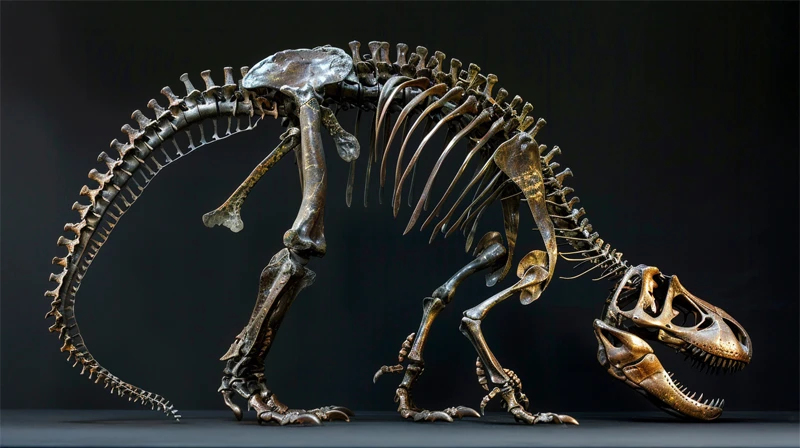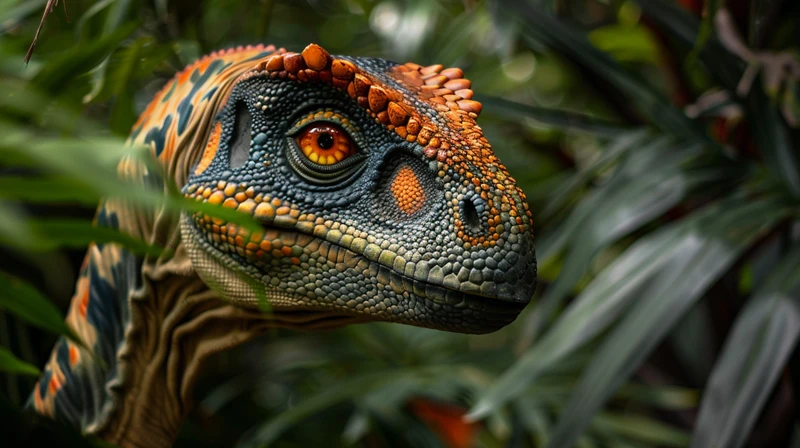If you love dinosaurs, you may have heard of a dinosaur with 500 teeth. Let's explore into this mystery and find out more about this fascinating creature!
The Dinosaur with 500 Teeth: Nigersaurus
The dinosaur with 500 teeth is called Nigersaurus (pronounced as "nye-jer-sore-us"). This dinosaur had a lot of teeth, around 500 to be exact! It wasn't a huge predator, though. In fact, Nigersaurus was a gentle plant-eating dinosaur, or herbivore, that lived about 110 million years ago during the Cretaceous Period.
Where Was Nigersaurus Found?
Nigersaurus was discovered in the Sahara Desert in a country called Niger, which is how it got its name. The fossils of Nigersaurus were first found by scientists in the late 20th century. The Sahara Desert was not always a dry place—a long time ago, it used to be much wetter and greener, which made it a perfect place for a dinosaur like Nigersaurus to live.
What Did Nigersaurus Look Like?
Nigersaurus was a pretty unique-looking dinosaur. It was around 9 meters (30 feet) long, about the size of a bus, but it wasn't as heavy as some of the other giants like T. rex or Brachiosaurus. Instead, it had a light build.
The 500 Teeth
The most interesting thing about Nigersaurus is its teeth. It had around 500 teeth that were arranged like a lawnmower, helping it graze on low-lying plants. Nigersaurus used these teeth to eat plants like ferns and other soft vegetation. Its mouth was shaped a bit like a vacuum cleaner, wide and flat, which helped it scoop up a lot of food at once.
 The teeth of Nigersaurus were also constantly replaced. Because it used its teeth a lot for eating, they wore out quickly, so new teeth grew in to replace the old ones. It could grow a new set of teeth every 14 days! This was really helpful for a dinosaur that ate plants all day.
The teeth of Nigersaurus were also constantly replaced. Because it used its teeth a lot for eating, they wore out quickly, so new teeth grew in to replace the old ones. It could grow a new set of teeth every 14 days! This was really helpful for a dinosaur that ate plants all day.
How Did Nigersaurus Behave?
Nigersaurus was probably a browser, which means it spent most of its time eating. Its head was positioned close to the ground, making it easier for it to munch on the plants that grew there. It had a long neck, but unlike some other long-necked dinosaurs, it wasn't super flexible. Its neck was more useful for reaching wide areas rather than high places.
 Nigersaurus was part of a group called sauropods. Unlike its huge relatives, such as Diplodocus or Brachiosaurus, Nigersaurus had a shorter neck and a smaller body. It also had a unique way of holding its head straight forward rather than up or down, which made it perfect for grazing.
Nigersaurus was part of a group called sauropods. Unlike its huge relatives, such as Diplodocus or Brachiosaurus, Nigersaurus had a shorter neck and a smaller body. It also had a unique way of holding its head straight forward rather than up or down, which made it perfect for grazing.
Why Is Nigersaurus Important?
Nigersaurus is important because it helps scientists learn about the different types of dinosaurs that lived in Africa and the environment during the Cretaceous Period. It also gives us clues about how diverse dinosaurs were, even within the same family group. The 500 teeth of Nigersaurus were a clever adaptation that made it well-suited to its environment, showing how even dinosaurs could be highly specialized.
Fun Facts About Nigersaurus
- Nigersaurus had 500 teeth that worked like scissors to clip plants.
- It had one of the shortest necks among the sauropods, which helped it focus on eating plants close to the ground.
- Scientists often call it the "Mesozoic Cow" because it probably spent most of its day grazing, just like modern cows do!
Conclusion
Nigersaurus might not be as famous as T. rex or Velociraptor, but it's a fascinating dinosaur in its own way. With its 500 teeth, it was a perfect plant-eating machine. It shows us just how creative nature can be in finding different ways to survive and thrive. The next time someone asks, "Which dinosaur had 500 teeth?" you'll know all about the amazing Nigersaurus, the gentle giant with an incredible mouthful of teeth.